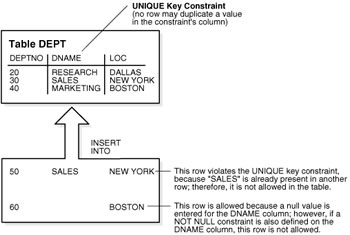Difference between Primary Key and Unique Key
Key Difference: A primary key cannot allow null and can only be created once in a table. A unique key allows null and can be created multiple times in a table. The keys play an important part when it comes to storing and retrieving data.
 Primary Keys and Unique Keys may not sound familiar for the majority of the people but these two are important concepts when it comes to programming. It is a popular question when it comes to interview about programming and database jobs. Primary Keys and Unique Keys are essential concepts that are primarily used in Microsoft SQL Server.
Primary Keys and Unique Keys may not sound familiar for the majority of the people but these two are important concepts when it comes to programming. It is a popular question when it comes to interview about programming and database jobs. Primary Keys and Unique Keys are essential concepts that are primarily used in Microsoft SQL Server.
Microsoft SQL is a relational database management system developed by Microsoft. Its main function includes storing and retrieving data when requested by other software applications that run on the same computer or different computers across a network.
The keys play an important part when it comes to storing and retrieving data. The data that is stored on the server is a series of tables with columns. These columns store various different types of information and can be retrieved using instructions. Primary Key and Unique Key are two types of keys that determine how the data is stored in the system.
Objects in the SQL Server database are organized as tables and indexes and stored as a collection of 8-KB pages. The keys help determine where the information is stored in the database. Both the keys are different from each other. However, a primary key is a type of unique key. They are also similar in functions but offer different functionalities.
Primary keys are defined through the PRIMARY KEY constraint and can be specified during the creation of the table. In the SQL Standard, primary keys may consist of one or multiple columns. Each column participating in the primary key is implicitly defined as NOT NULL. A primary key offers 3 main functions:
 A primary key cannot allow null (a primary key cannot be defined on columns that allow nulls).
A primary key cannot allow null (a primary key cannot be defined on columns that allow nulls).
Each table cannot have more than one primary key.
On some database systems a primary key creates a clustered index by default.
Unique keys are similar to primary keys and can be defined during the creation of the table. The unique keys also allows data or rows to be not repeated in any other table. The 3 main features that a unique key offers includes:
A unique key can allow null, but only one (a unique key can be defined on columns that allow nulls.)
Each table can have multiple unique keys.
On some database systems a unique key creates a nonclustered index by default.
Comparison between Primary Key and Unique Key:
|
|
Primary Key |
Unique Key |
|
Definition |
Primary key is a type of a unique key. This is the key that is allowed to migrate to other entities to define the relationships that exist among the entities. |
A unique key is a set of zero, one, or more attributes. The value(s) of these attributes are required to be unique for each tuple (row) in a relation. The value, or combination of values, of unique key attributes for any tuple should not be repeated for any other tuple in that relation. |
|
Used in |
Relational Database Management Systems such as MySQL, Oracle, etc. |
Relational Database Management Systems such as MySQL, Oracle, etc. |
|
Null Values |
Does not accept any null values |
Accepts only one null value in the table |
|
Type of Index |
Is a clustered index and data in the database table is physically organized in the sequence of clustered index |
Is a unique non-clustered index |
|
Number of Keys allowed |
Only one primary key in a table |
Can have more than one unique key in a table |
|
Convertible |
Can be made into a foreign key into another table |
Can be made into a foreign key into another table |
Image Courtesy: worldbestlearningcenter.com, docs.oracle.com









Add new comment